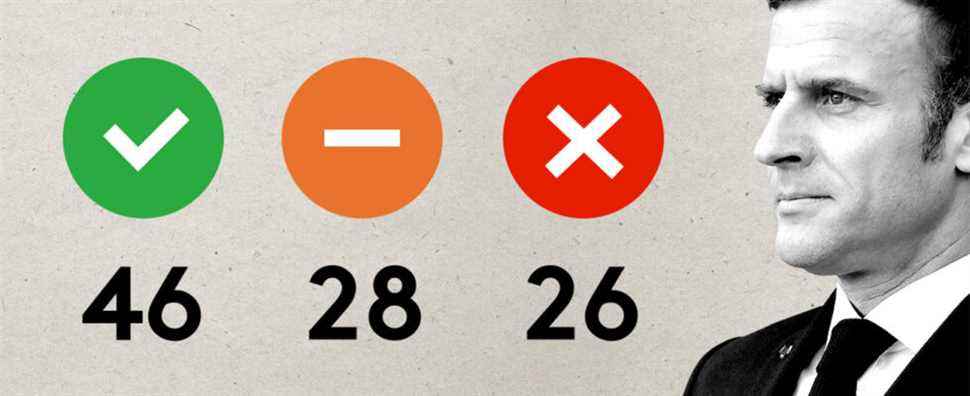Our methodology
Where do these 100 promises come from?
They are taken from Emmanuel Macron’s program, made up of more than 400 proposals, which was presented on March 2, 2017. These are available online in the form of a 17-page booklet (PDF) which brings together the main measures and in the form of an exhaustive online thematic classification, this time. We picked from one or the other of these versions according to practical criteria such as the conciseness of the promises or the precision of their formulation.
How were the pledges selected?
We have chosen these 100 promises according to their interest for the greatest number and their importance in the public debate. Candidate Macron’s emphasis on these promises was also decisive in our selection.
Why do certain key measures of the five-year term not appear?
We have chosen to study only the promises made during Emmanuel Macron’s campaign, disregarding the announcements made during his term of office. The bouquet of measures put in place after the crisis of “yellow vests” or during the health crisis therefore does not appear in this decryption. The same goes for certain promises made in meetings, during interviews, during his campaign, but ultimately absent from his program.
On what criteria were the pledges evaluated?
A promise is considered “fulfilled” when its entire content is verified, according to the exact title of candidate Macron’s program. It is “partially fulfilled” when only certain elements of this promise have been fulfilled or when it has been modified in relation to its statement. It is “not kept” when it is not implemented or when its fulfillment does not respect the content of the promise.
How were the checks carried out?
To assess these promises, we relied in particular on the legislation in order to verify whether the promised reforms had been translated into law. In the absence of a law, we turned to the ministries concerned to obtain answers on the state of progress of the projects. We also contacted sources outside the government to verify the pledges. Researchers, associations, trade unions, public agencies, economists, are thus quoted to support the analyses.
